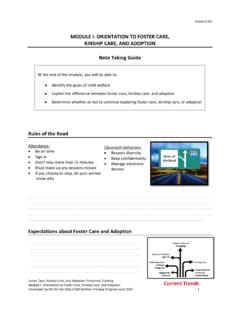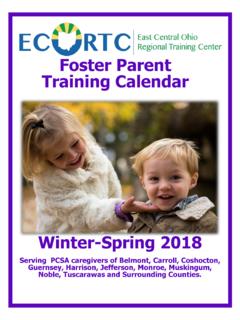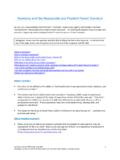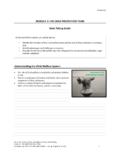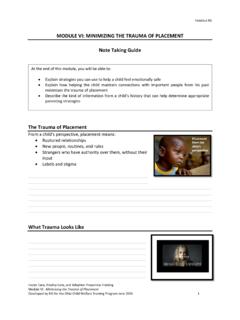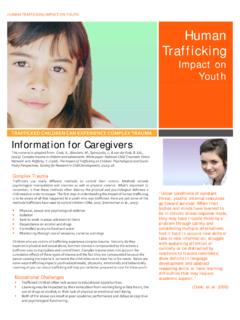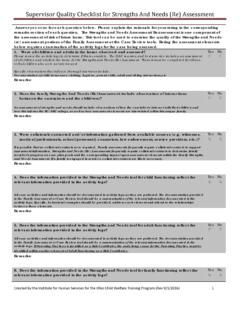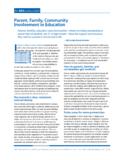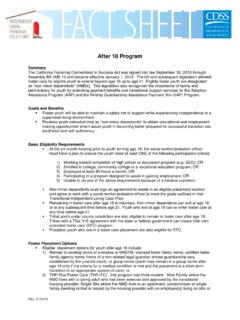Transcription of MODULE III: CHILD DEVELOPMENT Note Taking Guide
1 Handout #1 Foster care , Kinship care , and Adoption Preservice Training MODULE III: CHILD DEVELOPMENT Developed by IHS for the Ohio CHILD Welfare Training Program June 2015 1 MODULE III: CHILD DEVELOPMENT Note Taking Guide Individual DEVELOPMENT Core Concepts of DEVELOPMENT addressed: DEVELOPMENT is shaped by both nature (biology) and nurture (experience) DEVELOPMENT is influenced by the interplay between sources of vulnerability and sources of resilience Culture influences every aspect of DEVELOPMENT There is a broad range of individual differences within typical DEVELOPMENT The DEVELOPMENT of a CHILD unfolds along an individual pathway _____ _____ At the end of this session, you will be able to.
2 Identify the three primary social and emotional developmental tasks of young children Describe what is meant by brain plasticity Identify factors that can enhance CHILD DEVELOPMENT and promote well being Handout #1 Foster care , Kinship care , and Adoption Preservice Training MODULE III: CHILD DEVELOPMENT Developed by IHS for the Ohio CHILD Welfare Training Program June 2015 2 Attachment Core Concepts of DEVELOPMENT addressed: Relationships are the building blocks of healthy DEVELOPMENT The primary social and emotional tasks of young children are attachment, self regulation, and initiative.
3 Meeting a CHILD s needs consistently helps them form attachment. They develop trust and see the world as safe and predictable. _____ Self Regulation and Initiative Core Concepts of DEVELOPMENT addressed: Self regulation is a fundamental part of early childhood DEVELOPMENT Children are active participants of their own DEVELOPMENT Self regulation means the CHILD can control his emotions and behaviors. Initiative means the CHILD feels capable of meeting his needs. Handout #1 Foster care , Kinship care , and Adoption Preservice Training MODULE III: CHILD DEVELOPMENT Developed by IHS for the Ohio CHILD Welfare Training Program June 2015 3 _____ Brain DEVELOPMENT All Core Concepts of DEVELOPMENT addressed.
4 Brain plasticity means the brain can change based on a person s experiences. There are three main areas of the brain: The brain stem (survival), the limbic system (emotions), and the cortex (logic). _____ Handout #1 Foster care , Kinship care , and Adoption Preservice Training MODULE III: CHILD DEVELOPMENT Developed by IHS for the Ohio CHILD Welfare Training Program June 2015 4 Protective Factors Core Concepts of DEVELOPMENT addressed: A person remains vulnerable to risk and open to protective influences throughout the early years of life and into adulthood The course of DEVELOPMENT can be altered by effective interventions that change the balance between risk and protection Internal protective factors include attachment, self regulation, and initiative.
5 External protective factors include resilience, strong social connections, knowledge about parenting and CHILD DEVELOPMENT , and access to concrete supports. Children develop protective factors when they can have typical, age appropriate experiences. Caregivers use a Prudent Parent Standard to make decisions about what activities to allow. _____ Recommended CHILD DEVELOPMENT Websites American Academy of Pediatrics: CHILD DEVELOPMENT Institute: American Psychological Association: Jim Casey Youth Opportunities Initiative: Zero to Three: Ohio Help Me Grow: CHILD DEVELOPMENT Interactive Application: learning Bright Futures (activity book for kids, 1 2 minute videos on a variety of topics, screening tools, etc.)
6 : Ages and Stages Questionnaires o Developmental Screening Toolkit: screening o Developmental Milestones Screening: Handout #1 Foster care , Kinship care , and Adoption Preservice Training MODULE III: CHILD DEVELOPMENT Developed by IHS for the Ohio CHILD Welfare Training Program June 2015 5 Recommended Well Being Websites Search Institute Developmental Assets In 1990, Search Institute released a framework of 40 Developmental Assets, which identifies a set of skills, experiences, relationships, and behaviors that enable young people to develop into successful and contributing adults.
7 Assets Developmental Relationships Search Institute s newest research to practice initiative will focus on studying and strengthening the developmental relationships that help young people succeed. A developmental relationship helps young people attain the psychological and social skills that are essential for success in education and in life we study/developmental relationships Center for the Study of Social Policy Strengthening Families Five protective factors are the foundation of the Strengthening Families Approach: parental resilience, social connections, concrete support in times of need, knowledge of parenting and CHILD DEVELOPMENT , and social and emotional competence of children.
8 Research shows thee protective factors are also promotive factors that build family strengths and a family environment that promotes optimal CHILD and youth DEVELOPMENT . families/the basics/protective factors Youth Thrive This initiative has examined the research knowledge base to identify protective and promotive factors that build healthy DEVELOPMENT and well being for youth as they move through adolescence into adulthood. welfare/youth thrive Devereux Center for Resilient Children DCRC s Mission is to promote social and emotional DEVELOPMENT , foster resilience and build skills for school and life success in children birth through school age, as well as to promote the resilience of the adults who care for them.
9 Resilience/ Handout #1 Foster care , Kinship care , and Adoption Preservice Training MODULE III: CHILD DEVELOPMENT Developed by IHS for the Ohio CHILD Welfare Training Program June 2015 6 List three ways you will use the information from this training. 1. 2. 3. Handout #2 Foster care , Kinship care , and Adoption Preservice Training MODULE III: CHILD DEVELOPMENT Developed by IHS for the Ohio CHILD Welfare Training Program June 2015 1 MODULE III: CHILD DEVELOPMENT Social and Emotional Developmental Tasks Step 1: For your assigned developmental task, identify the stage when the task typically occurs.
10 Developmental Task Stage Can distinguish between fantasy and reality. Infant (0 18 months) CHILD begins to sense if caregiver is angry or sad and can be affected by this. Toddler/Preschooler (18 months 5 years) Capacity for caring and sharing and a desire for more intimate relationships. School age (5 years 13 years) Capacity to control emotions, for example, CHILD ask for help rather than tantrum. Teenager (13 years 18 years) Step 2: Try to reach agreement within your group on a specific age within the stage that the developmental task occurs.
